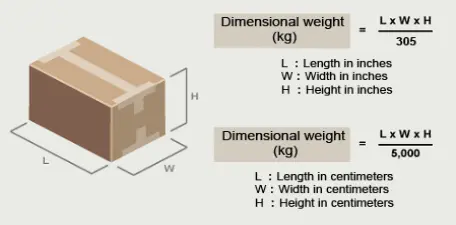Understanding Volumetric Weight
We use volumetric weight when determining the weight of the shipments we send and we understand that this is not always an easy concept to grasp. We want to break down the details for you in order to make it as clear as possible.
The cost of transporting a shipment can be affected by the amount of space that it occupies on an aircraft, rather than the actual weight. This is the volumetric (or dimensional) weight.
The volumetric weight of a shipment is a calculation that reflects the density of a package. A less dense item generally occupies more volume of space, in comparison to its actual weight.
The volumetric or dimensional weight is calculated and compared with the actual weight of the shipment to ascertain which is greater; the higher weight is used to calculate the shipment cost.

Calculating Volumetric Weight
Volumetric weight is calculated by multiplying the length x height x width of a package and dividing the result by a volumetric factor.
That factor varies with the unit of measure. Since we use kilograms to calculate shipping charges, we use the following formulas to calculate volumetric weight:
Please be aware that the shipping weight indicated on your merchant order confirmation may be based on ground shipping or domestic air shipping from the merchant to our hub location.
Depending on the carrier and size of package, the Merchant’s ground shipping charges may or may not utilise volumetric weight calculation.
If the carrier used by the Merchant does use volumetric weight calculation for ground or for domestic air, the volumetric weight calculation will use a different volumetric factor and the volumetric weight will be lower than that used for international air shipments.
We hope this helps to make volumetric weight a little bit easier to understand.
Please feel free to contact customer service with any additional question.
